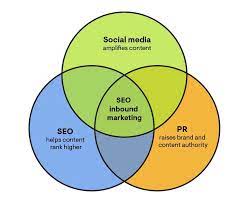
In the world of digital marketing, SEO inbound marketing has emerged as a powerful strategy to attract and engage potential customers. By focusing on creating valuable content that draws people in naturally, businesses can increase their online visibility and drive qualified traffic to their websites.
SEO inbound marketing involves optimizing your website and content to rank higher in search engine results pages (SERPs) for relevant keywords. This not only helps improve your visibility but also establishes your authority in your industry, making it easier for potential customers to find and trust your brand.
One of the key benefits of SEO inbound marketing is that it targets users who are already actively searching for information related to your products or services. By providing them with valuable, informative content that addresses their needs and pain points, you can attract high-quality leads that are more likely to convert into customers.
Furthermore, SEO inbound marketing is a cost-effective strategy compared to traditional outbound marketing tactics. Instead of interrupting potential customers with ads or cold calls, you are creating content that organically attracts them to your website, resulting in higher engagement and conversion rates.
Overall, SEO inbound marketing is a powerful tool for businesses looking to increase their online presence, attract qualified leads, and drive sustainable growth. By focusing on creating valuable content that resonates with your target audience and optimizing it for search engines, you can position your brand as a trusted authority in your industry and build long-lasting relationships with your customers.
Inbound marketing is a strategic approach that focuses on attracting and engaging potential customers through the creation and distribution of valuable, relevant content. Unlike traditional outbound marketing tactics that involve pushing messages out to a broad audience, inbound marketing aims to pull in qualified leads by providing them with helpful information that addresses their needs and interests. By leveraging techniques such as search engine optimization (SEO), content marketing, social media, and email campaigns, businesses can build trust with their target audience, establish credibility in their industry, and ultimately drive conversions and customer loyalty through inbound channels.
In the realm of SEO inbound marketing, understanding the four main types of SEO is essential for optimizing your online presence and driving organic traffic to your website. The four types of SEO include on-page SEO, off-page SEO, technical SEO, and local SEO. On-page SEO focuses on optimizing individual web pages with relevant keywords, quality content, and meta tags to improve search engine rankings. Off-page SEO involves building backlinks from reputable websites to enhance your site’s authority and credibility. Technical SEO deals with optimizing website structure, speed, and mobile-friendliness for better user experience and search engine visibility. Lastly, local SEO targets geographically specific searches to help businesses attract local customers effectively. By incorporating these different types of SEO strategies into your digital marketing efforts, you can enhance your online visibility and reach a wider audience more effectively.
In the realm of SEO, inbound marketing refers to the strategic approach of attracting potential customers through valuable and relevant content rather than traditional outbound marketing techniques. Inbound marketing in SEO involves optimizing your website and content to naturally draw in users who are actively seeking information related to your products or services. By focusing on creating high-quality, informative content that addresses the needs and interests of your target audience, businesses can improve their online visibility, establish credibility in their industry, and ultimately drive qualified traffic to their websites.
In SEO inbound marketing, the 4 stages of the inbound methodology are Attract, Convert, Close, and Delight. These stages represent a strategic approach to engaging with potential customers throughout their buyer’s journey. The Attract stage focuses on drawing in visitors through compelling content and SEO strategies. The Convert stage involves converting these visitors into leads by capturing their contact information through forms or other means. In the Close stage, leads are nurtured into customers through targeted marketing efforts and personalized communication. Finally, the Delight stage aims to provide exceptional customer experiences to foster loyalty and advocacy, ultimately turning customers into promoters of the brand. These 4 stages form a comprehensive framework for businesses to attract, engage, and retain customers effectively through SEO inbound marketing strategies.
Inbound marketing enhances search engine ranking by focusing on creating high-quality, relevant content that naturally attracts and engages users. By consistently producing valuable content that addresses the needs and interests of your target audience, you can increase your website’s authority and relevance in the eyes of search engines. This, in turn, can lead to higher rankings for relevant keywords, improved visibility in search engine results pages (SERPs), and ultimately more organic traffic to your website. Inbound marketing strategies such as creating informative blog posts, optimizing website structure and metadata, building backlinks from reputable sources, and engaging with users on social media all contribute to a holistic approach that boosts search engine ranking over time.